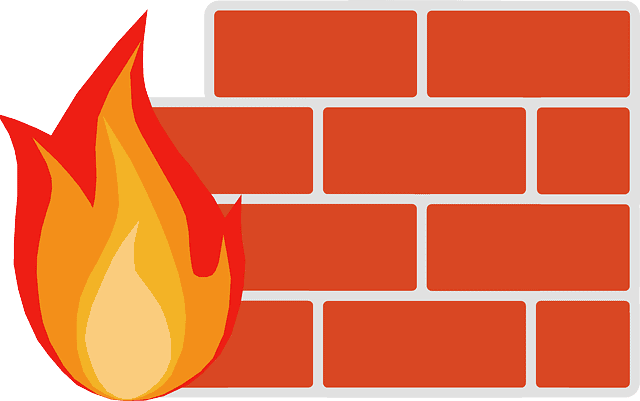As today’s devices become increasingly interconnected, data security becomes a top priority. One critical component is a firewall which acts to filter incoming and outgoing network traffic.
Firewalls may consist of hardware with router capabilities or software (like the built-in firewall in Windows), with routers redirecting packets based on their MAC addresses and destination IP addresses, while firewalls review each packet’s content.
What is a Router?
Routers transmit data packets between networks, enabling users to share files across the Internet. They also act as traffic cops by selecting routes for computers to travel down. Without routers, businesses could not communicate or collaborate on projects effectively.
Routers are networking devices that operate at the third layer of the OSI model. They allow network devices like computers, printers, scanners and hard drives to communicate between themselves as well as connect to the internet, acting both as firewalls and content filters that protect against security threats as well as prevent employees from downloading malicious software.
Most routers include a web-based management program for performing administrative activities, including changing passwords and activating security protocols as well as setting port forwarding rules. Some models even come equipped with family-friendly features like content blocking or timers to limit internet use that can be enabled individually on devices or globally across your network. In addition, wireless access points exist that transmit WiFi signals throughout your network.
Features of Router
Routers are network devices used to transmit data between multiple networks. Using ports, these routers filter incoming information according to its type (e.g. http traffic commonly uses port 80 while outgoing email over SMTp typically utilizes port 25), before routing appropriate packets of information directly to their appropriate applications.
Routers can act as firewalls to safeguard against malicious attacks and data leakage, and often come equipped with parental controls that restrict internet access for children. However, it’s important to remember that routers only provide limited network security protection against outside threats.
Many routers feature an internal wireless access point that converts Ethernet data to radio waves that can be broadcast across your Wi-Fi network, making it possible for multiple devices to connect at once and improving overall productivity. Some routers even feature Quality of Service (QoS) options that prioritize certain types of data over others – much like how highways give priority to carpools on highways – improving multimedia performance like videoconferencing or gaming online.
Types of Router
There are various kinds of routers, from wired models to wireless ones and those featuring different ports such as Fast Ethernet or gigabit, for high speed network access. Furthermore, there are also dual WAN options that offer redundancy in case one connection goes down.
Routers operate at the network layer (Layer 3 of the OSI model), and identify data packets’ IP addresses by inspecting their headers and comparing this information against its routing table to determine which path best forwards them.
Routers connect large networks, like WANs. Their main function is routing data across the Internet – such as emails or websites – from source to destination, such as video files. Routers also enable hardware devices like printers and smart security systems to connect to it; their maximum speeds may be stated in megabits per second but keep in mind that actual speeds may be lower due to shared usage among all connected devices.
How Does Router works?
Routers serve a vital purpose: connecting computers and other devices to both the internet and each other. They do so by converting Ethernet signals into WiFi waves that can be broadcast over your home Wi-Fi network. Many routers also come equipped with security features that prevent outsiders from hacking your Wi-Fi signals.
To ensure packets reach their destinations safely, a router scans each packet’s data for its header before consulting a list of routes to determine its next stop. It uses various factors – including destination location and travel time – when choosing its path of travel for each packet.
A router is an essential piece of networking hardware in any home or small business with multiple computers or devices connected to the internet, as without one your devices wouldn’t be able to communicate between each other or access the web. Furthermore, its primary responsibility lies in protecting against outside threats like viruses, malware and spyware.
What is a Firewall?
Firewalls are an essential element of network security, offering essential defense against cyberattacks. As entry points to private networks they filter traffic based on pre-established security rules. Firewalls may also serve as DHCP relays allowing devices to communicate across various network segments while still upholding security policies.
When data arrives from the Internet and enters your network, a firewall inspects its header before making its decision whether or not to forward or block it according to rules you set up. This process usually happens quickly enough that most people don’t even notice.
Outgoing data poses a considerable security threat, including key loggers (which record passwords) and macros (scripted computer demands that cause applications to crash). A firewall that filters outgoing traffic can help shield against these risks; however, you must keep its software current to protect against cyberattacks of various forms.
Features of Firewall
Firewalls monitor data packets at a network level to block malware and suspicious activity as well as quickly assess for hidden infections. They may take either software or hardware forms; software firewalls can be installed directly onto each machine while hardware firewalls can be established between your gateway and network – these latter solutions may even come as cloud solutions that offer “firewall as a service”.
Static packet-filtering firewalls operate at OSI layer 3 of the network stack and use filtering based on IP addresses, port numbers and packet protocols to prevent two networks from connecting directly without authorisation. They cannot track ongoing connections; rather they must approve new traffic at every new packet received.
Next-generation firewalls can monitor traffic at every level of the OSI model, including application layer. They can recognize and block specific content as well as apply policies based on who’s using an application or website, providing bandwidth control to prioritize certain apps and websites – particularly useful when dealing with VoIP phone systems where voice/video calls often experience severe turbulence issues.
Types of Firewall
There are various kinds of firewalls to choose from. Hardware devices may sit between networks and the Internet while software programs run on computers; additionally, firewalls may also be built into routers.
A packet-filtering firewall is the simplest form of firewall available. This type of protection checks information packets before they can reach the network, taking into account surface-level details like their destination IP address, packet type and port number to determine their approval for passage through to its intended target. If denied passage it will be dropped instead and may never reach its desired goal.
Proxy firewalls are another popular form of network protection, serving to filter outgoing data from a network and prevent hackers from gaining entry to internal computers or devices. Some proxy firewalls also act as DHCP servers that assign IP addresses for devices on the network – an especially handy feature for businesses sharing equipment like printers or wireless security cameras. More advanced protection may include network address translation or virtual private networks.
Difference Between Firewalls and Routers?
Firewalls and routers both play key roles in network security, but their functions differ considerably. A router focuses on routing data packets between networks; firewalls prevent unauthorised access from the Internet into private systems. One difference between firewalls and routers is that firewalls filter incoming traffic while routers do not filter any.
Firewalls monitor both incoming and outgoing network traffic, either hardware or software-based. They work by inspecting each packet’s headers and contents against predefined rules, before making a determination whether to allow or block connections based on these results. They can even be configured to block specific types of attacks such as DDoS attacks or worms.
A firewall can be integrated into a router or purchased as a separate device; many consumer routers now come equipped with inbuilt firewall protection. Low-end combined router/firewall devices may be more suitable for small businesses or paranoid individuals; however, dedicated firewalls offer greater packet analysis capability.











FIND US ON SOCIALS